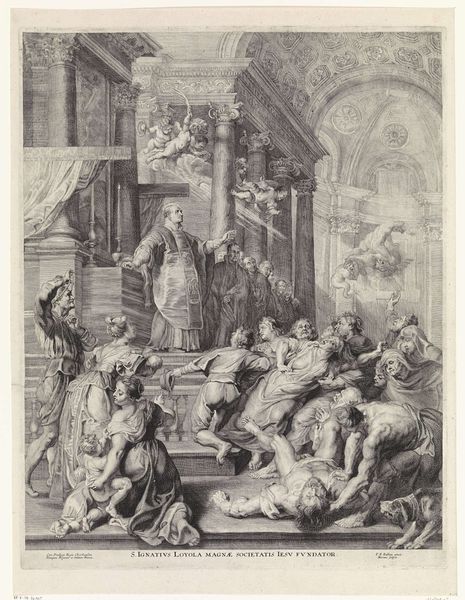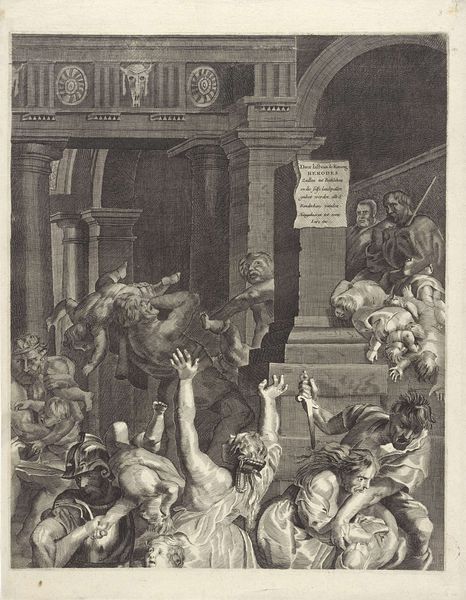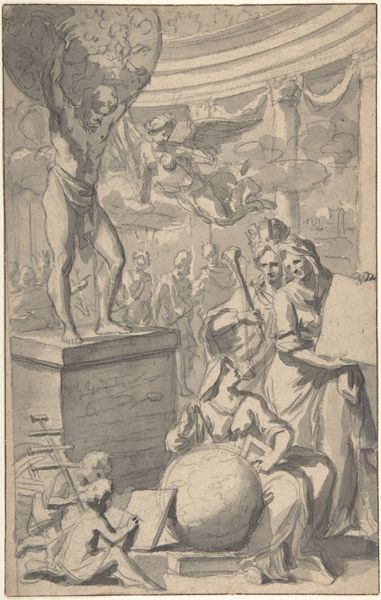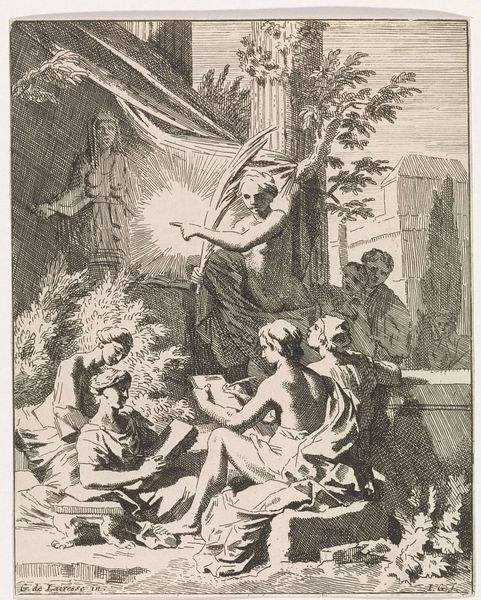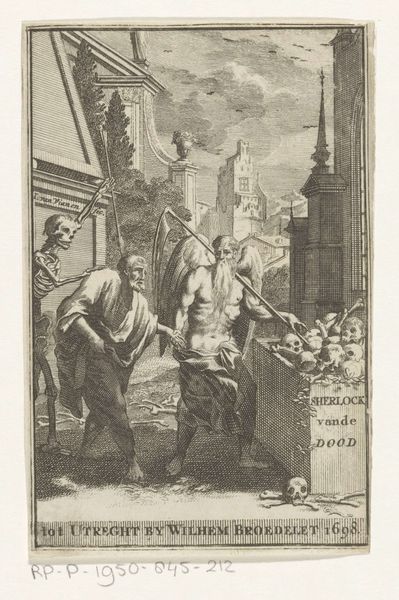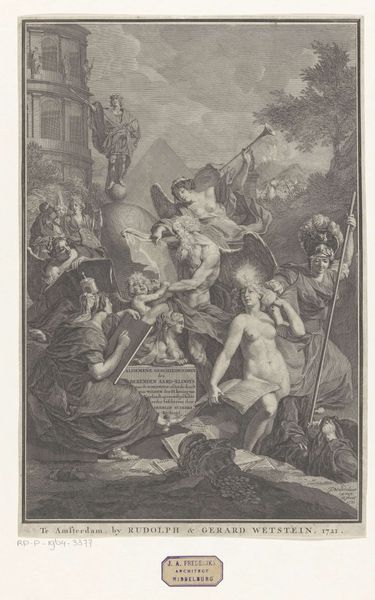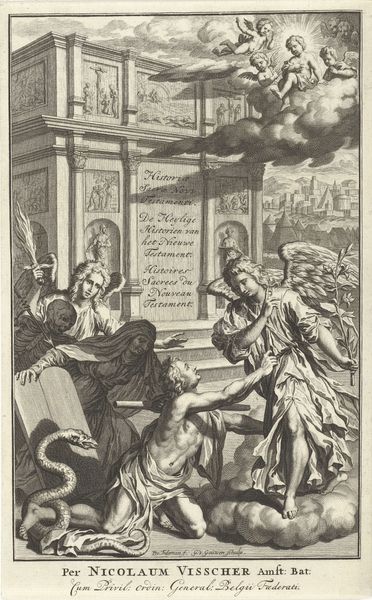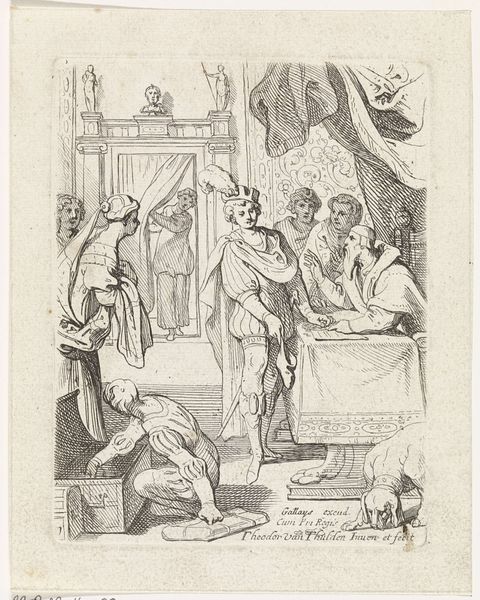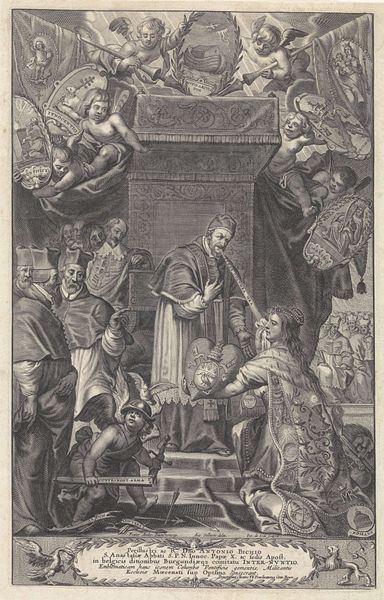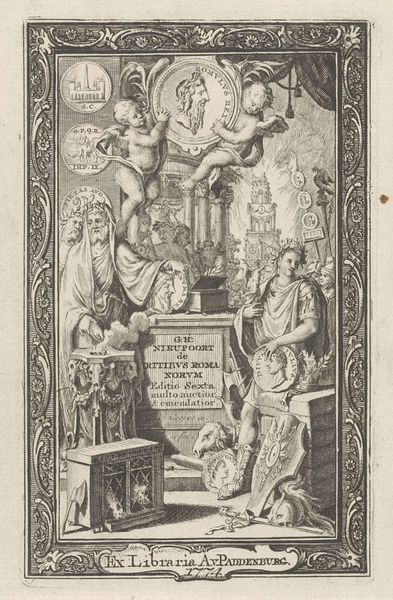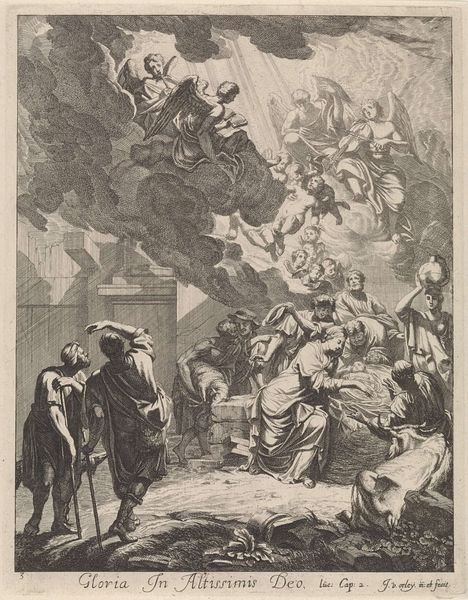
Drie engelen bewonderen een obelisk met scènes uit het Nieuwe Testament 1732
0:00
0:00
matthijspool
Rijksmuseum
print, engraving
#
allegory
#
baroque
# print
#
pen illustration
#
pen sketch
#
old engraving style
#
figuration
#
line
#
history-painting
#
engraving
Dimensions: height 222 mm, width 178 mm
Copyright: Rijks Museum: Open Domain
Curator: This delicate engraving is titled "Drie engelen bewonderen een obelisk met scènes uit het Nieuwe Testament," created in 1732 by Matthijs Pool. It resides here at the Rijksmuseum. My immediate impression is one of ethereal lightness, a baroque vision in monochrome. The fine lines create a sense of almost fragile reverence. Editor: I’m drawn to the symbolism of the obelisk itself. It acts as a concentrated pillar, doesn’t it, funneling faith and representing established power structures, especially religious ones? Note how the figures are literally looking up to it, towards patriarchal interpretations of religion. Curator: Precisely. The obelisk is not merely a monument, but a loaded signifier. It is covered with scenes from the New Testament, meticulously rendered. And the surrounding angels are not simply decorative; they are active observers and celebrants of this visual dogma. Their poses echo the various modes of piety and faith within baroque religious visuality. Editor: And those cherubs add another layer. Notice how some of them are creating music; that reinforces its status through divine creative activity. Curator: Indeed, they function as a kind of interpretive chorus, each engaged in different aspects of veneration, amplifying and making the scenes palatable through innocence. Think of them, if you will, as instruments of soft power; they soften what would otherwise be potentially threatening dogma, and that invites access to religious meaning. It could also represent, broadly, innocence subjected to dogma in a certain structure of thought. Editor: The figures have an elegance, but it strikes me how removed they are from any sense of earthly grounding. Even the palm tree feels stylized. Do you think the composition contributes to an overall sense of ideological detachment, or transcendence? Curator: I think that’s key. The setting feels allegorical, removed from reality, which then prompts deeper interrogation into power itself as represented. In that regard, even its lines seem to carry a subtle message. Editor: Looking closely, it seems those are sketches upon sketches upon sketches. Such intricate design and subtle line variation surely serve symbolic and aesthetic ends simultaneously. A dense work, a very strong ideological example of 18th-century engraving that makes you want to unpack layer upon layer. Curator: It truly does open up into an entire world. The power and meaning of a moment, elegantly suspended in ink.
Comments
No comments
Be the first to comment and join the conversation on the ultimate creative platform.
